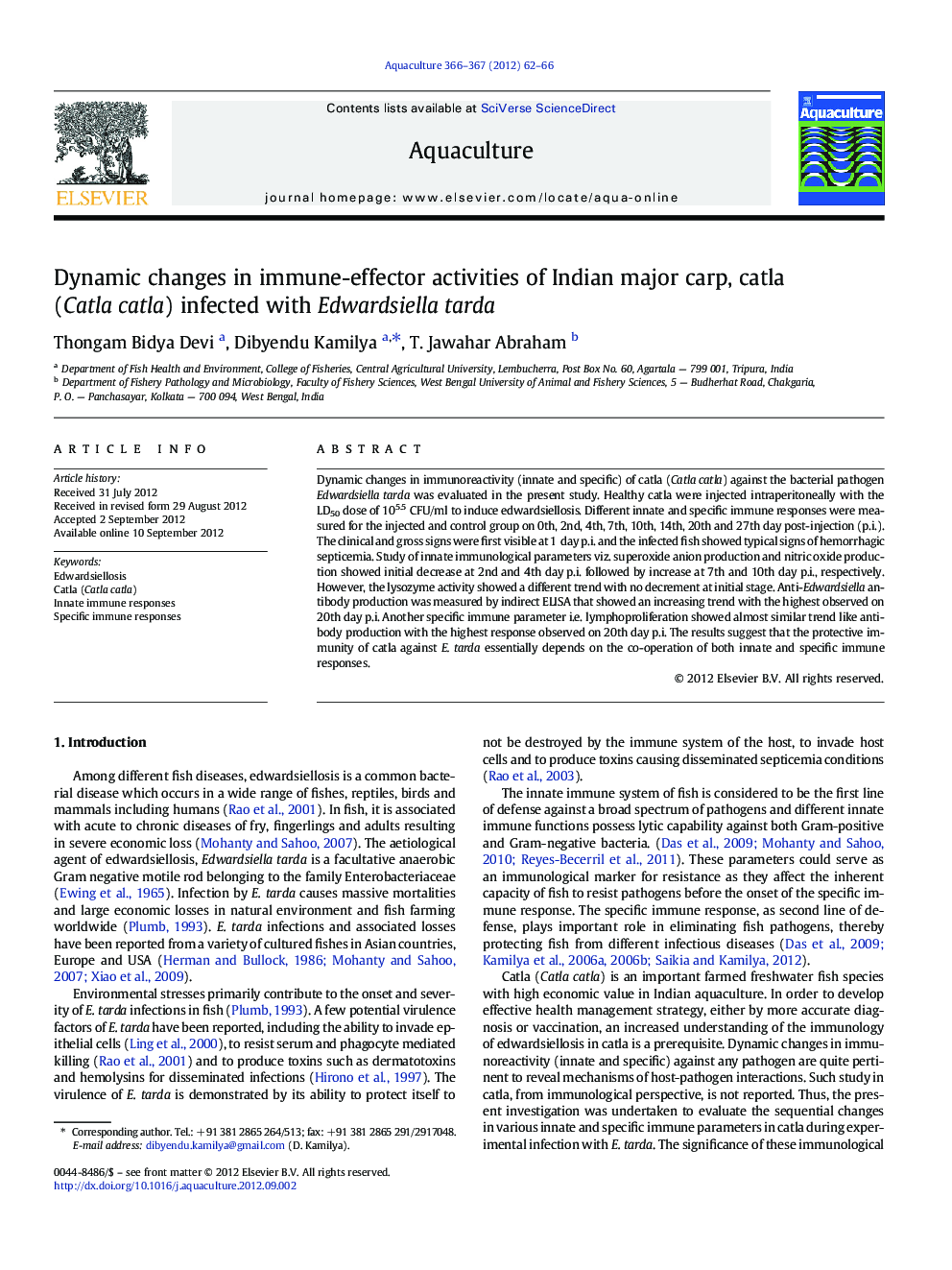| Article ID | Journal | Published Year | Pages | File Type |
|---|---|---|---|---|
| 2422296 | Aquaculture | 2012 | 5 Pages |
Dynamic changes in immunoreactivity (innate and specific) of catla (Catla catla) against the bacterial pathogen Edwardsiella tarda was evaluated in the present study. Healthy catla were injected intraperitoneally with the LD50 dose of 105.5 CFU/ml to induce edwardsiellosis. Different innate and specific immune responses were measured for the injected and control group on 0th, 2nd, 4th, 7th, 10th, 14th, 20th and 27th day post-injection (p.i.). The clinical and gross signs were first visible at 1 day p.i. and the infected fish showed typical signs of hemorrhagic septicemia. Study of innate immunological parameters viz. superoxide anion production and nitric oxide production showed initial decrease at 2nd and 4th day p.i. followed by increase at 7th and 10th day p.i., respectively. However, the lysozyme activity showed a different trend with no decrement at initial stage. Anti-Edwardsiella antibody production was measured by indirect ELISA that showed an increasing trend with the highest observed on 20th day p.i. Another specific immune parameter i.e. lymphoproliferation showed almost similar trend like antibody production with the highest response observed on 20th day p.i. The results suggest that the protective immunity of catla against E. tarda essentially depends on the co-operation of both innate and specific immune responses.
► Dynamic changes in immunoreactivity of C. catla against E. tarda were evaluated. ► Innate immunity shows initial decrease followed by increase in the responses. ► Specific immunity shows an increasing response with increasing days post infection. ► The protective immunity depends on the co-operation of innate and specific immunity.
